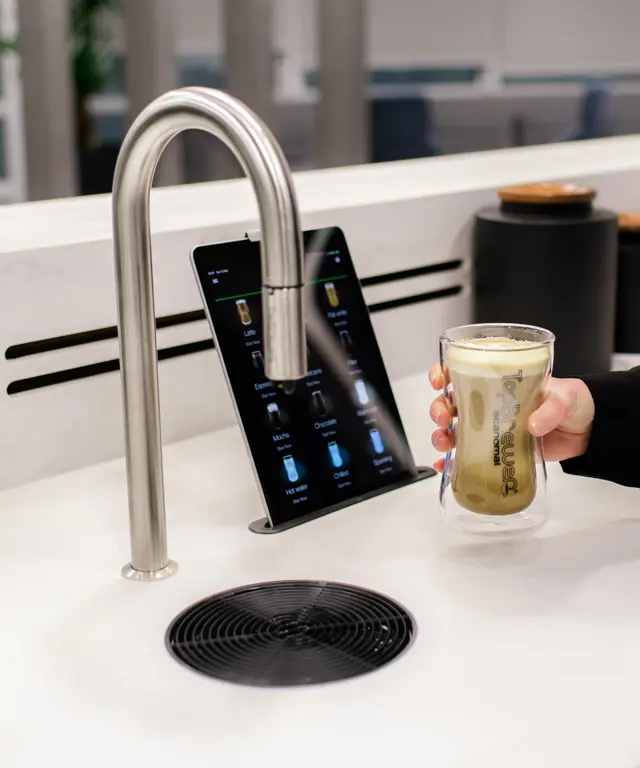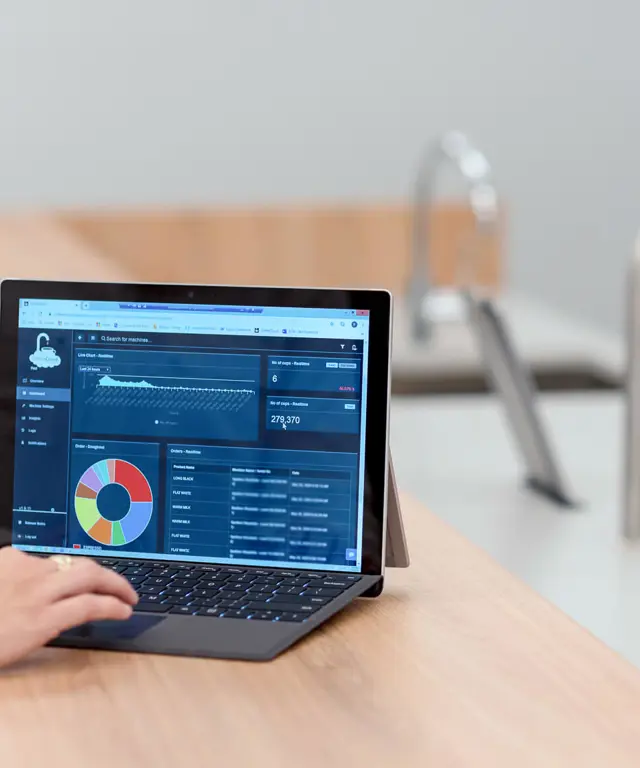Co-living & Coffee: Elevating the communal coffee experience with TopBrewer
Often described as a hybrid of a hotel and high-quality student accommodation, co-living brings the concept of communal living into the 21st century.

Co-living
Often described as a hybrid of a hotel and high-quality student accommodation, co-living brings the concept of communal living into the 21st century. Popular in cities, where real estate can be very expensive, co-living as a concept has been increasing in popularity in recent years, particularly amongst Millennials and Generation Z. Co-living is often described as the housing equivalent of coworking, bringing together likeminded individuals with similar interests into a shared house or apartment. Central to the co-living concept is creating a real community that goes beyond just being neighbours.
The co-living experience includes a private bedroom, but places emphasis on communal spaces such as living areas, kitchens, gardens and amenities including gyms and cinema rooms. With community and collaboration at the heart of the co-living ethos, the communal spaces and amenities are arguably the most important feature. After all, a well decorated bedroom could be found in any type of shared living, but a well decorated bedroom with access to a cinema room and a house of like-minded people is something else. But how can you stand out and offer something the co-living generation will actually want?
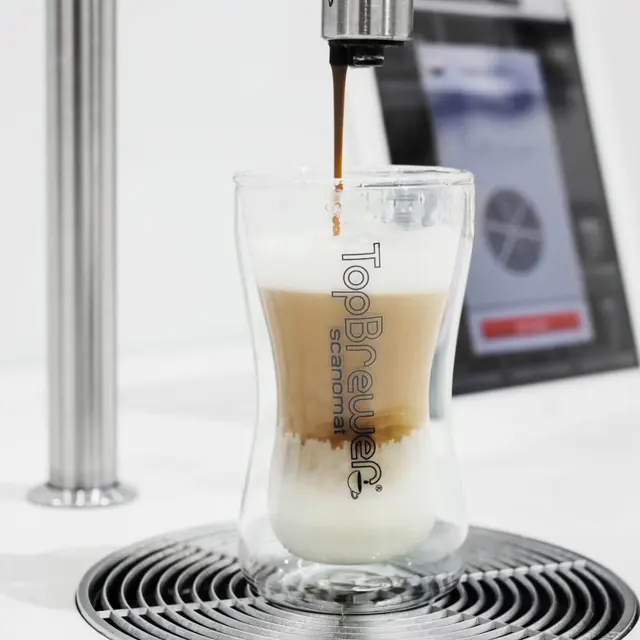
Central to the co-living concept is creating a real community that goes beyond just being neighbours.
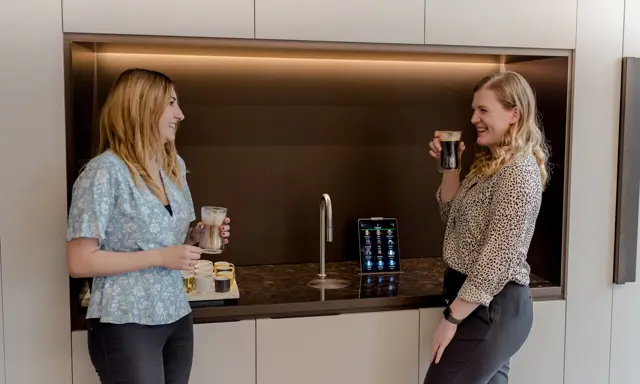
Build relationships
Fundamental to the co-living ethos is the communal area. The communal area is the main space in which individual resident come together to create a community, and in order to succeed in the co-living world it’s vital to get it right. Providing first-class amenities and experiences is an easy way to encourage residents to use the space, get to know their neighbours, and build the communities that are so desired in the co-living concept. With the end goal to be to create a community amongst strangers, the amenities offered must allow for, and even encourage, interaction. A well-designed and strategically-located coffee machine offers a simple yet effective way of encouraging interaction and conversation between residents, allowing them to chat and build relationships in a relaxed and informal way as they grab a coffee.
Millennials are changing the way we drink coffee, and they will no longer make do with a cup of instant. They expect a top-quality drink wherever they are and they are willing to pay for the privilege. Offering a premium coffee solution for residents will not only help your space stand out from the crowd and cater to the younger generations’ preference for a great coffee, it can also help build the community, as housemates chat and socialise over a cup of coffee.
From an operational perspective, a top-quality coffee experience offers a way to bring in extra revenue. Charging a small amount for each cup can help to quickly recoup costs whilst also offering a cost-effective solution for residents, who no longer need to nip to the local coffee shop to spend a small fortune on a latte.
In an industry continuing to grow in popularity, standing out from the crowd is important, so give your residents a next-level coffee experience with TopBrewer. With the unique design allowing for integration into almost any space and with contactless payment available through ScanomatPAY, TopBrewer is the perfect solution for your co-living space.
TopBrewer combines modern, sleek design, barista-quality beverages, cashless payment, voice control and IoT technology, to deliver a variety of speciality drinks at the touch of the TopBrewer app. With its clean lines and minimal design, the TopBrewer provides a smart, stylish solution for retail that complements your perfect customer experience.
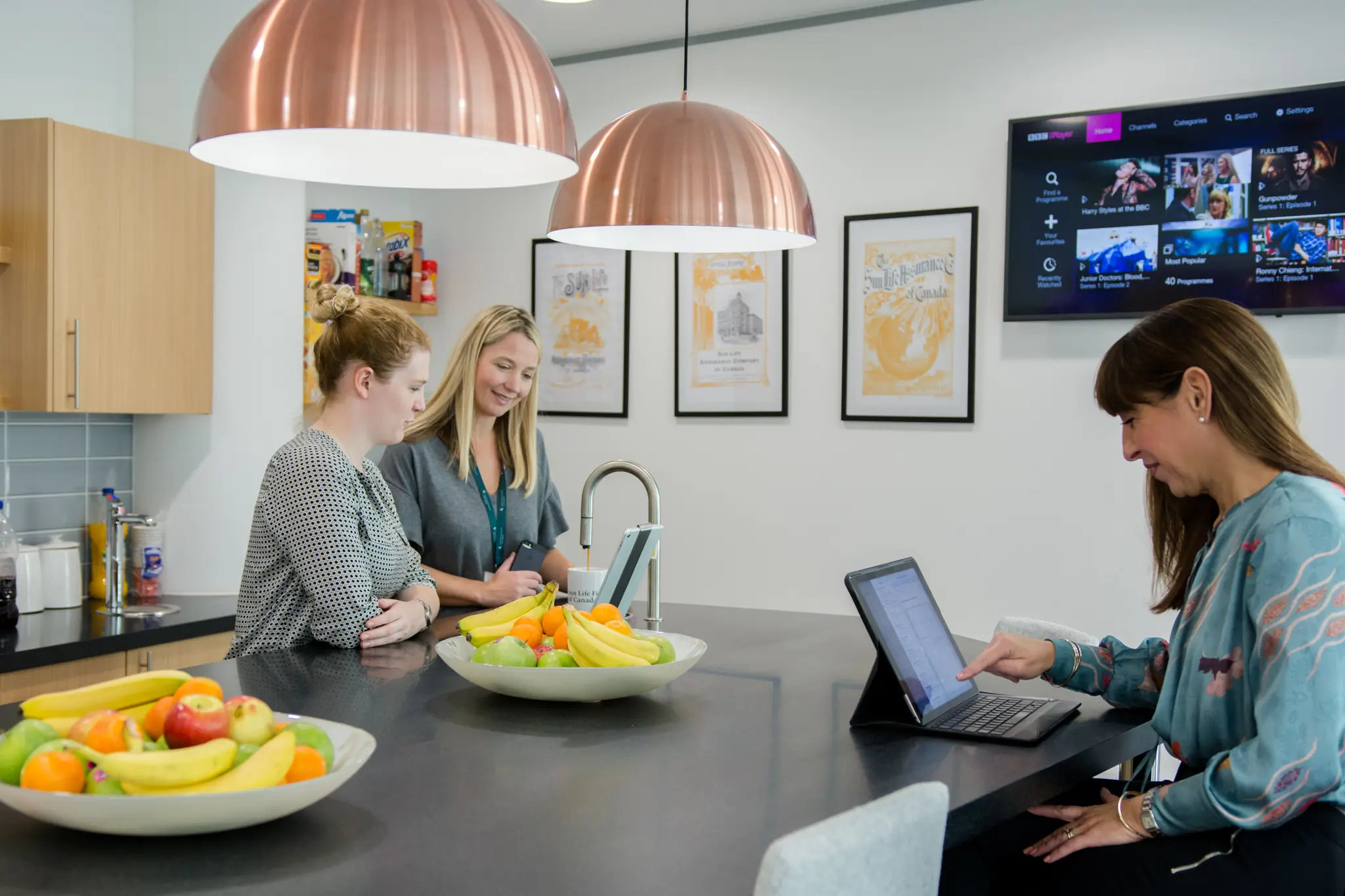
Why co-living?
Unlike traditional shared living, where the kitchen is often the only shared space, co-living providers prioritise the communal spaces and shared amenities, aiming to build a community of like-minded people. It’s not uncommon to find a co-living space with a shared gym and work space and a jam-packed calendar of events alongside the standard shared kitchen and garden. Many co-living spaces also double as coworking spaces, particularly amongst the younger generations of digital nomads, who are used to remote working and want the flexibility to travel and move around the world without the constraints of traditional renting or property ownership.
With property prices skyrocketing, getting onto the property ladder in most cities is nearly impossible, and the co-living model offers an affordable, yet luxurious, alternative for young professionals. For Millennials and Generation Z, lots of whom are digital nomads, the ability to work remotely has changed their priorities when choosing where to live, with affordability, amenities, luxury and sense of community all playing a big role, so co-living offers the perfect solution.
As well as simplifying the process of renting a home and offering a package that is often cheaper than traditional shared living arrangements, co-living offers a type of lifestyle that might otherwise be unattainable, with on-site swimming pools, gyms and sometimes even spa facilities.
Despite the concept of modern co-living being in its infancy, co-living developments are starting to appear in major cities worldwide, from London to San Francisco. The majority of those living in co-living developments are under 40 years old, and with more 25-34 year olds living with roommates than in previous generations, it’s no surprise that some companies are making the most of the sharing economy by offering an attractive, near-utopian lifestyle with co-living.
High-tech living
High-tech living for a high-tech generation
Millennials and Generation Z have grown up with technology at their fingertips, and they expect their home to meet certain standards, including access to super fast WiFi, smart assistants such as Amazon’s Alexa and more. The integration of smart technology throughout the space can not only help attract residents, it can also help save costs, by allowing smart technology to optimise the heating and lighting, for example.
App and voice control technologies are becoming commonplace, and will be particularly important in the post-Covid world, and the ability to use your smartphone to control lighting, music and even the coffee machine is attractive for the tech-driven younger generations, whilst also helping to maintain hygiene standards by limiting the need to touch shared surfaces and buttons.
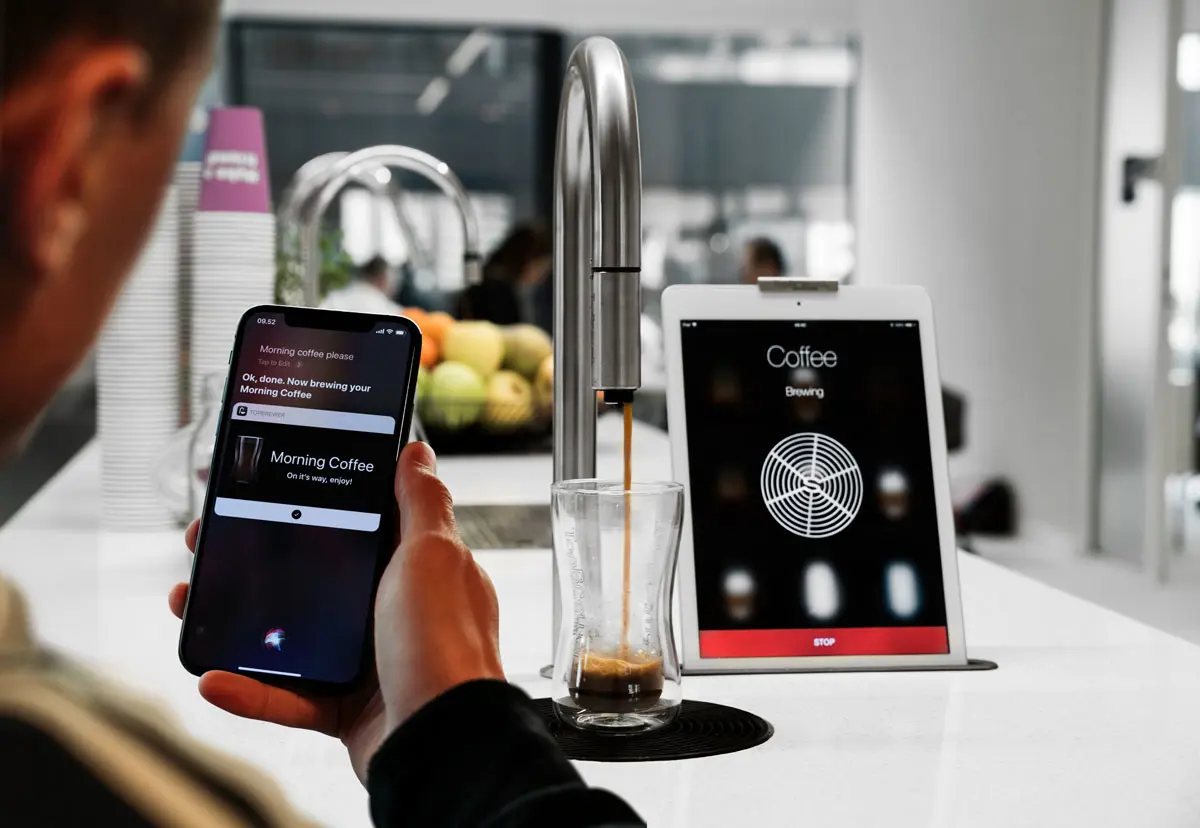
Sustainability
Research shows that the majority of Millennials and Generations Z will pay more for sustainable goods, and this extends to where they live. Sustainability is an important part of their lives, and the younger generations want their space to match up with their values, so ensure the purchasing decisions you make take sustainability and ethics into account.
Whether it’s by opting for environmentally-friendly appliances, such as coffee machines or fridges, using ultra-efficient lightbulbs or installing solar panels, making sustainable choices now will pay dividends in the future.
Spark interaction
Whether you’re designing the private bedrooms or the communal living area, creating comfortable, inviting spaces where residents will actually want to spend time is crucial. Creating designs that intentionally bring people together will help build the communities necessary for the co-living model to work.
Focus on where people tend to congregate and catch up; a strategically placed coffee machine can help bring people together as they chat over a coffee, and a well-designed living room will allow housemates to unwind together after a day at work. From the colours on the walls, to the number of armchairs and the layout of the TV room, the overall design can make or break the space.
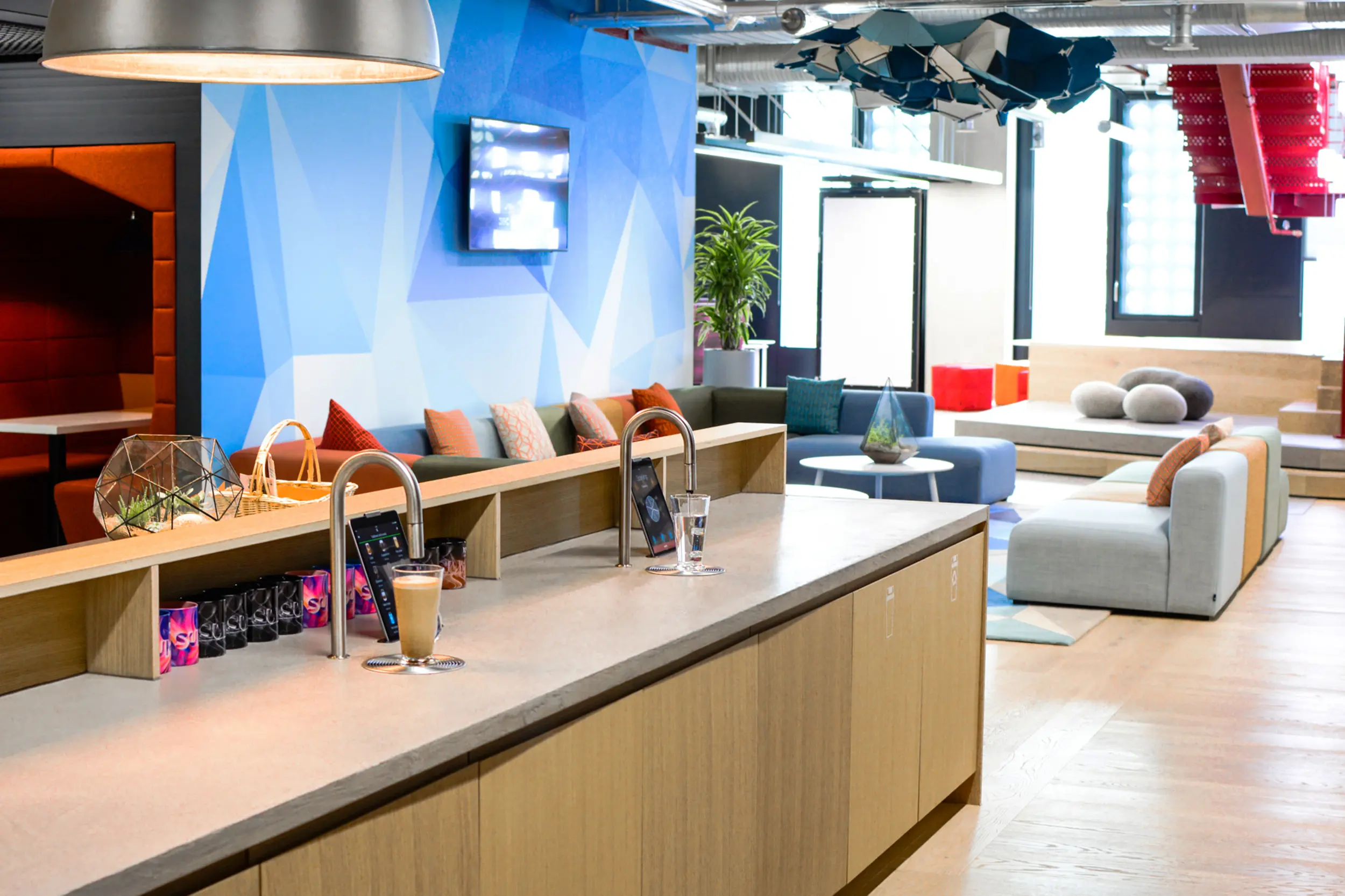
Co-working & co-living
The co-living model generally tends to attract highly qualified individuals from technology, start-up and entrepreneurial backgrounds. Because of this, many will work remotely at least part of the time, and some will be permanently home-based. Rather than them paying to access a separate coworking space, ensuring they have the appropriate facilities where they live, either offered as part of their tenancy agreement or as an additional subsidised cost, would be a really attractive proposition. To make it work, you need to treat the in-house workspace as you would an actual coworking space – ensure there are sufficient work stations and plug sockets, opt for superfast WiFi and make sure there’s a premium coffee offering to get the residents through the work day.
Contact us to find out more about how TopBrewer could elevate your co-living space or to book a virtual demo.
Introducing TopBrewer Pro 2021 model. Smart Meets Craft. Click here to watch the video.
